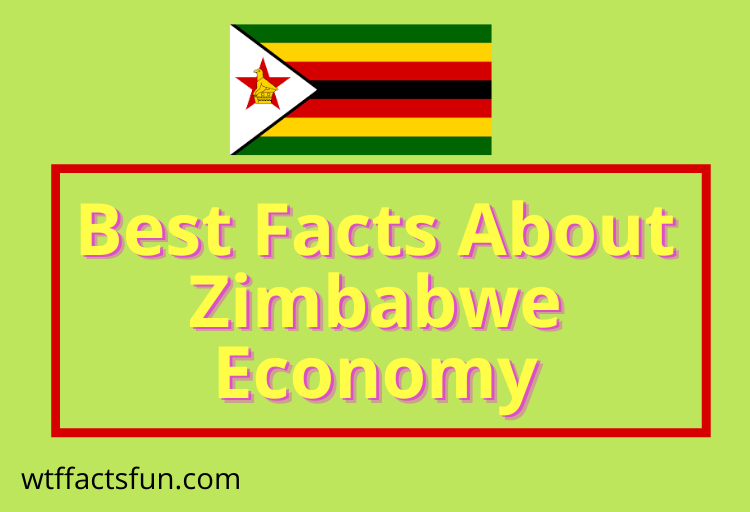
Facts About Zimbabwe Economy
Facts About Zimbabwe Economy: Friends, today we will tell you some unique facts about Zimbabwe. You will be shocked after knowing these facts because you have never read or heard about them before today. Zimbabwe is a very developing country today but there was a time when it was counted among the rich countries of the African continent.
1. Zimbabwe is the only country in the world where there is also a trillion-dollar note.
2. A few years ago, when the value of Zimbabwe’s currency was completely reduced. At that time bag of salt was purchased with a bag full of money.
3. The main reason for the fall of Zimbabwe’s currency was because the government of Zimbabwe had printed many notes and distributed them to the public.
4. Due to poverty and disease, the average life expectancy of people in Zimbabwe is 57 years.
5. Zimbabweans consider fat people as a symbol of wealth because they think they have enough money to eat meat every day.
6. When the value of Zimbabwe’s currency went down after that another currency was also declared the official currency of Zimbabwe. At present, a total of 8 currencies have been recognized in the country.
7. Zimbabwe has the most 16 official languages in the world.
8. Zimbabwe’s Kariba lake is the largest man-made lake in the world.
9. Zimbabwe’s economy is dependent on manufacturing, mining, and farming.
10. The world’s largest waterfall Victoria Fall is in Zimbabwe. The sound of its water falling can be heard even from 40 km away.
11. Between 2008 and 2019, 30 to 35 lakh people migrated from Zimbabwe after the downfall of Zimbabwe’s currency.
12. Despite the extreme poverty, the people of Zimbabwe are the most literate in the African continent.
13. 70% of Zimbabweans live below the poverty line, the rest fall into the middle class.
14. Many people in Zimbabwe are suffering from AIDS, Cancer, Cholera, and Malaria.
15. Due to poverty, there is a dearth of health services in Zimbabwe. Due to this people treat themselves with witchcraft.
- Hyperinflation Crisis: Zimbabwe experienced one of the most severe cases of hyperinflation in history during the late 2000s. At its peak in November 2008, the inflation rate reached an astronomical 89.7 sextillion percent (89.7 followed by 20 zeros) per month.
- Currency Abandonment: Due to hyperinflation, Zimbabwe abandoned its own currency in 2009 and started using foreign currencies, primarily the US Dollar and South African Rand, for everyday transactions. This continued until 2016 when the Reserve Bank of Zimbabwe introduced the “bond notes” as a quasi-currency.
- Cash Shortages: The scarcity of physical cash, even in the form of bond notes, has been a persistent issue in Zimbabwe’s economy. This has led to long queues at banks and difficulties in conducting transactions.
- Land Reform: In the early 2000s, the Zimbabwean government implemented a controversial land reform program that resulted in the seizure of white-owned commercial farms. This led to a significant drop in agricultural productivity, negatively impacting the economy and causing food shortages.
- Informal Economy: The informal sector plays a crucial role in Zimbabwe’s economy. Many citizens engage in informal trading and small-scale businesses as a means of survival due to limited formal job opportunities.
- Mining Industry: Zimbabwe is rich in mineral resources, including gold, platinum, and diamonds. The mining sector has the potential to contribute significantly to the economy, but issues like inadequate infrastructure and inconsistent regulations have hindered its growth.
- High Unemployment: Zimbabwe has faced high unemployment rates for many years, particularly among the youth. Lack of job opportunities and underemployment remain pressing challenges.
- Economic Contractions: The Zimbabwean economy has faced multiple periods of economic contraction and recession, often linked to political instability, poor governance, and policy mismanagement.
- Currency Reintroduction: In 2019, Zimbabwe introduced a new currency, the Zimbabwean Dollar, in an effort to regain control over its monetary policy. However, the currency has struggled to maintain value and stabilize the economy.
- External Debt: Zimbabwe has a significant external debt burden, which has led to challenges in securing international loans and financing. This debt burden has contributed to the country’s economic challenges.
- Tourism Potential: Despite its economic difficulties, Zimbabwe boasts natural wonders like Victoria Falls and diverse wildlife, making it a potential hub for tourism. However, infrastructural limitations and political uncertainties have hampered the development of the tourism industry.
- Economic Reforms: The government has made efforts to implement economic reforms to address issues like fiscal deficits, public sector inefficiencies, and corruption. However, the success of these reforms remains a subject of debate and scrutiny.
Final Words:
In conclusion, the Zimbabwean economy has faced significant challenges, including hyperinflation, currency instability, and political turmoil. While efforts are being made to stabilize the economy and implement reforms, the road to sustained economic growth and development remains complex and multifaceted.
Read more:
10 Fun Facts About Mercury for Kids
17 Best Facts About New Zealand For Kids
22 Best Fun Facts About Australia For Kids

